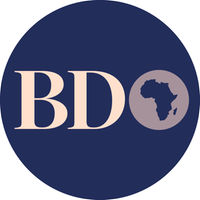
National Treasury building. FILE PHOTO | NMG
Summary
- The IMF’s latest assessment of Kenya’s debt sustainability shows the country is likely to breach the threshold over the next decade going by the level of external loans against the value of dollar-earning exports, tax revenues and gross domestic product (GDP).
- Official data shows that Kenya’s debt stood at 69.2 percent of the GDP in August 2020, having climbed from 61.7 percent at the end of 2019 and 50.2 percent at the end of 2015.
- The IMF warning comes barely a month after Treasury Cabinet Secretary Ukur Yatani told Parliament that Kenya expects to return to the Eurobond market in 2024 to refinance Sh130billion ($1.2billion) maturing bonds it borrowed in 2014.
Kenya risks losing access to cheap Eurobonds due to its debt pile-up, the International Monetary Fund (IMF) has warned, citing investor concerns over possible defaults or deferment of repayments.
The IMF’s latest assessment of Kenya’s debt sustainability shows the country is likely to breach the threshold over the next decade going by the level of external loans against the value of dollar-earning exports, tax revenues and gross domestic product (GDP)—factors that drive lending decisions and pricing of sovereign debt.
Official data shows that Kenya’s debt stood at 69.2 percent of the GDP in August 2020, having climbed from 61.7 percent at the end of 2019 and 50.2 percent at the end of 2015.
“The DSA (Debt Sustainability Assessment) suggests that Kenya is susceptible to export and market financing shocks and more prolonged and protracted shocks to the economy would also present downside risks to the debt outlook, including from the continued potential loss of market access for frontier economies at reasonable prices, thus raising the probability that the debt indicators would remain in breach of the thresholds over time,” the IMF said in its assessment report.
The IMF warning comes barely a month after Treasury Cabinet Secretary Ukur Yatani told Parliament that Kenya expects to return to the Eurobond market in 2024 to refinance Sh130billion ($1.2billion) maturing bonds it borrowed in 2014.
Sub-Saharan African countries have been tapping cheap dollar loans that saw outstanding debt nearly double to $625 billion between 2011 and 2019, according to the World Bank. But now the continent is facing jittery investors since Zambia defaulted on its Eurobonds and other countries restructured bilateral loans under a deal offered by the Group of 20 of leading economies.
The IMF projects that Kenya’s debt in present value terms will hit 69.9 percent of the GDP in 2022 and breach the 70 percent threshold up to 2024 when the country is scheduled to settle the 2014 Eurobond in a bullet payment -- a single repayment of principal of a bond or loan on its maturity date.
The fund’s assessment further shows that Kenya will also be in breach of the amount of interest payments against dollar-earning exports and debt service against tax revenues in 2024.
The country has recently turned to expensive commercial loans to refinance maturing debt and fund the budget. These include syndicated loans arranged by banks which are short-term and charge interest rates as high as eight percent.
In 2013 only seven percent of external debt was commercial, 27 percent bilateral and 64 percent borrowed from multilateral sources.
Currently, commercial debt makes up 31 percent of foreign loans, bilateral debt is 30 percent while multilateral debt is 39 percent.
Out of Kenya’s Sh3.2 trillion external debt, $6.1 billion (Sh652.7 billion) is owed to holders of the country’s Eurobonds.
The current Jubilee administration has borrowed nine syndicated loans compared to a single one during the tenure of President Mwai Kibaki’s, reflecting the recent borrowing spree.
These have been borrowed from Standard Bank, Standard Chartered Bank, Citi Bank, Trade Development Bank (former PTA Bank), Hong Kong and Shanghai Banking Corporation (HSBC) and Qatar National Bank.
TDB is Kenya’s biggest lender of syndicated loans and has issued the country with over Sh160 billion over the last four years.
The IMF and the World Bank are helping Kenya balance its books by offering low-cost loans with long grace periods and lengthy maturity to reduce interest payments and make debt easy to service.
Last year Kenya turned to the two institutions for cheaper concessional loans, tapping Sh100 billion from the World Bank and Sh79.3 billion from the IMF.
Kenya plans to borrow an additional $1.5 billion (Sh150 billion) from the World Bank in 2021 and take a $2.3 billion (Sh250.4 billion) loan facility from the IMF for budget support.
The loans are offered at less than two percent with a grace period of five years and a 30-year repayment period





No comments :
Post a Comment